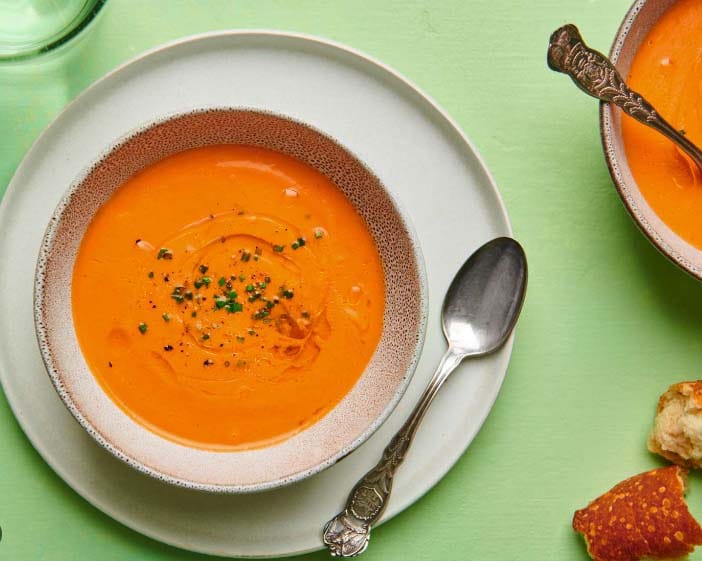Gazpacho, the cold, refreshing soup known for its bright flavours and vibrant colours, is a dish that speaks volumes about the culinary history and cultural landscapes of Spain. This quintessentially Andalusian dish has roots that stretch back into the annals of history, traversing cultures and continents to become a symbol of Spanish gastronomy.
The Origins and Evolution of Gazpacho
The story of gazpacho begins in the sun-drenched fields of Andalusia, a region known for its blistering summers and agricultural bounty. However, the origins of gazpacho trace even further back, to the Roman Empire, with its introduction of a simple soup made from bread, olive oil and garlic. These ingredients, readily available and affordable, formed the basis of what would evolve into gazpacho.
The transformation of gazpacho into the cold soup we know today was significantly influenced by the Moors’ occupation of Spain. The introduction of new ingredients, such as almonds and vinegar, during this period added complexity and depth to the dish. However, it was the discovery of the New World and the introduction of tomatoes and bell peppers to Europe that truly revolutionised gazpacho, giving it the characteristic red hue and refreshing taste that have made it famous worldwide.
A Culinary Reflection of Andalusian Spirit
Gazpacho, in its essence, is a testament to the art of making do, a culinary reflection of the Andalusian spirit of resourcefulness and ingenuity. It was originally a peasant dish, created to cool off during the hot summer months and to make use of the abundant seasonal produce. Over time, it became a staple of Spanish cuisine, enjoyed by all segments of society and celebrated for its simplicity and elegance.
The traditional gazpacho is a blend of ripe tomatoes, green bell peppers, cucumbers, garlic, olive oil, vinegar and stale bread soaked in water, all finely blended into a smooth, chilled soup. This base recipe has given rise to numerous variations, reflecting regional preferences and the creativity of those who make it. From the addition of fruits like watermelon or strawberries to create sweeter versions, to the incorporation of seafood for a more luxurious dish, gazpacho continues to evolve while remaining true to its humble origins.
Gazpacho: A Cultural Artefact
Gazpacho’s journey from a rudimentary meal to an icon of Spanish cuisine is a narrative of cultural amalgamation and culinary innovation. It encapsulates the influences of the various peoples who have called Andalusia home, from the Romans to the Moors, and the impact of Spain’s global explorations.
Today, gazpacho is celebrated not only in Spain but around the world, a testament to its universal appeal and versatility. It is more than just a dish; it is an experience, offering a taste of the Andalusian summer in every spoonful. Gazpacho stands as a reminder of the power of simple ingredients to create something truly extraordinary, a culinary masterpiece that continues to delight and refresh palates across the globe.
In the end, gazpacho is more than a cold soup; it’s a cultural artefact, embodying the history, traditions and soul of Andalusia. Its story is a reminder of the enduring legacy of Spain’s culinary heritage, a legacy that continues to inspire and bring joy to those who partake in its vibrant flavours.





